'Godzilla's point of view is unknowable': How VFX artists gave the King of Monsters new kaiju friends
Continue this week Monarch: Legacy of MonstersGodzilla woke up.
You may not have known he was taking a nap; the people who gathered on top of him in the desert certainly didn't know that. And the show hasn't lacked in Kaiju during its absence; the Apple TV Plus show, set in the Monsterverse of Godzilla (2014) and Godzilla vs. Kong (and so forth Godzilla x Kong: The New Empire), has many large monsters that live up to the name. Already the human main characters are of Monarch have traveled the world and encountered everything from Trapdoor Crab on Skull Island to a sick looking Frost Pig in the Arctic.
Bringing these monsters to life is a crucial part of the work of Sean Konrad, VFX supervisor for the series, who worked on Ms. Marvel, For all humanity, and 2014 Godzilla. A typical process might involve a few rounds of building a design, modeling it from a 2D illustration, waiting for the storyboards to come back, roughly animating it, shooting the scene, and then working in post-production to make it to make sure it looks the way it should. “Then you look at it and think: Well, it doesn't work yet; it is not scary enough, (or) the personality is not developed,” says Konrad. Then you give that back to the concept team, with some feedback – like 'we really want to get some big scary teeth' or 'we want to get an expressive face out of it' – and voila!”
But again, that's just for An sample. And the stakes get even higher when you deal with the king. Konrad spoke to Polygon (in fairly spoiler-free terms) about how he and his team are shaping the world Monarch: Legacy of Monsters.
Image: Apple TV Plus
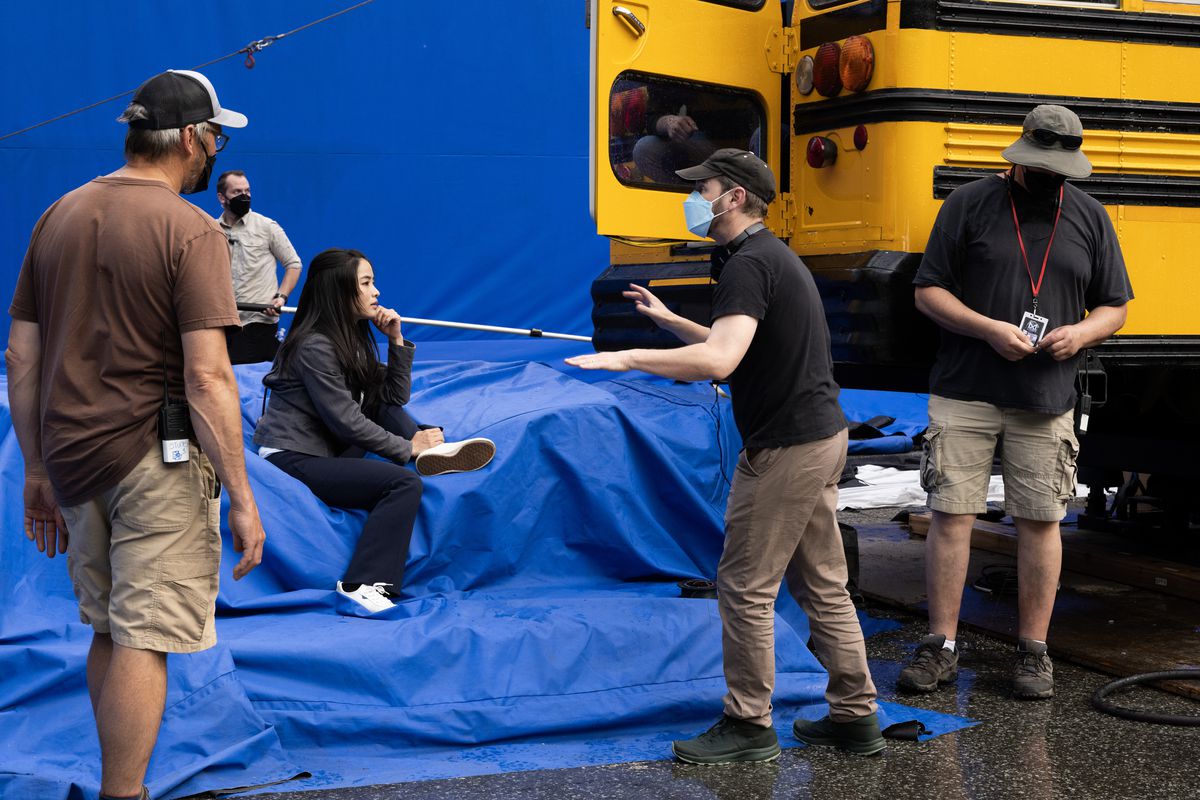
Image: Apple TV Plus
Polygon: One of the things we talk about a lot at Polygon is how good Monarch balances the human side with the monster side. And I'm curious how your role in all that came about, and how that helped balance this gigantic monster scale with this, you know, puny people and their drama?
Sean Conrad: This is a show where our big action monster set pieces are part of the emotional journey of our main characters. In a lot of big action movies you take your set pieces, and then you figure out your story and how they fit into it, where this is kind of the opposite. Every kind of big action scene has something that connects to the inner nature of our characters – their fears, their hopes – and that was super appealing to me from a script standpoint. And then just figuring out how we do that from a storytelling perspective has been so much fun.
How did the monster design come about – for things like the Arctic monster, was it a very collaborative process of, I think it would be cool if his mouth looked like this?
A big part of the design philosophy of the legendary Monsterverse, for their gargantuan monsters, is this: look at the natural world, find something strange, wonderful, and terrifying. And then expand on that; deal with it in a maximalist way, do something ridiculous with it. And when you're done, go back to the natural world and look at the real skin and texture of the things you're trying to evoke when you look at them.
So sometimes we had a very clear direction. And sometimes it will be more situational – we know the monster needs to do something, and sometimes we want it to relate to the natural landscape it's in. And sometimes we want it to be incongruent in some sense, like in the second episode, where the creature comes out of the ship. That was very intentional, we don't want it to feel like this is part of it.
(With the creature in the Arctic) in the script it had a very specific direction: we want it to look like a pangolin crossed with a star-nosed mole. So you look up those creatures, and then you get on a Zoom call with Matt Fraction and Chris Black, and you say: What the hell are you talking about here?
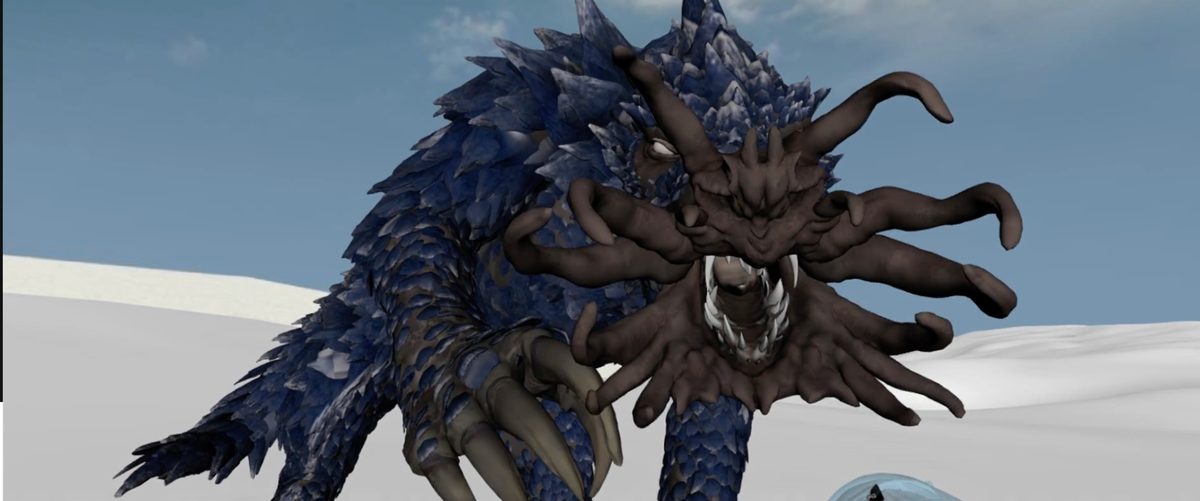
Image: Apple TV Plus
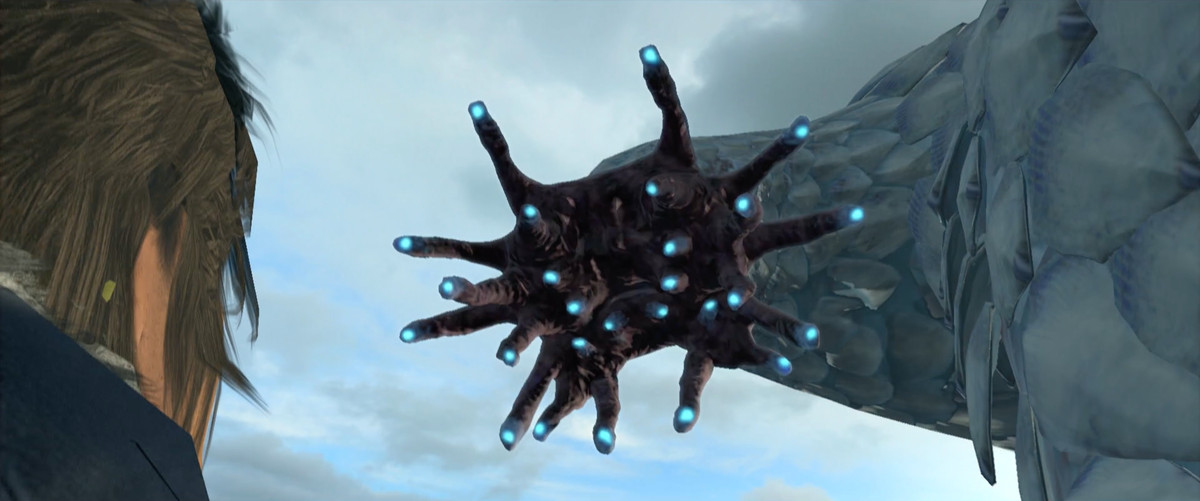
Image: Apple TV Plus
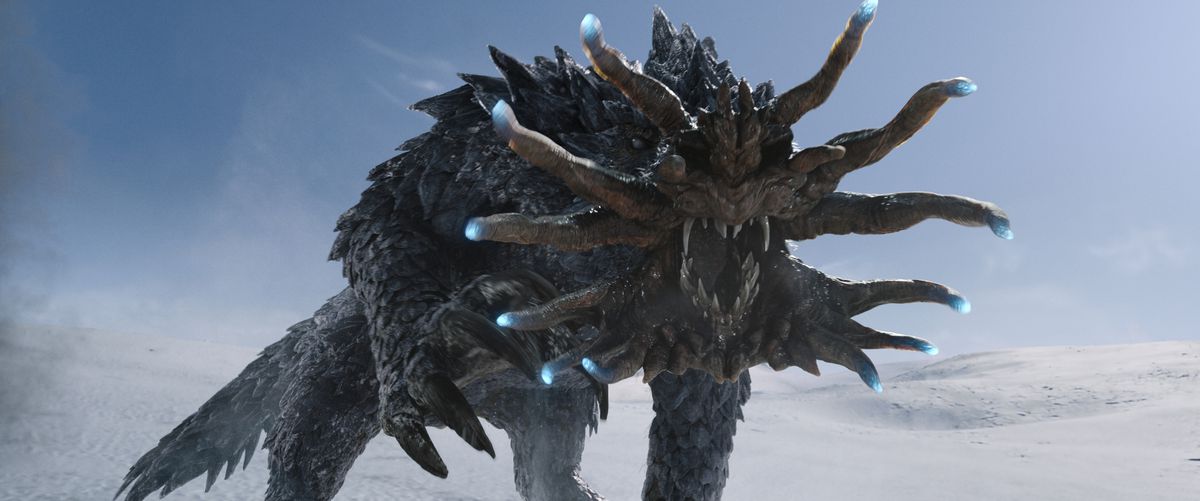
Image: Apple TV Plus
Above: Two views for the Frost Vark. Below: the completed creature with tentacles attacking its prey.
Matt Fraction had assigned his son to conduct research as part of his compensation to find strange and wonderful creatures in the natural world. And one of the things he encountered was the star-nosed mole, this creature that lives underground and has appendages sticking out of its face, that senses where it is when it's digging, and has these big, very creepy claws; it's kind of cute in a way. And then the pangolin: this amazing, endangered animal with scales growing out of its back. It's super weird; it's a bipedal, four-legged animal that bends around a bit and still walks through it. So we're giving that to our concept team – Wētā FX did a lot of the concept for this show, and specifically for that creature.
There are so many scenes from the past with Godzilla that he has to relate to. How did you marry those choices to make him feel like the same monster?
The 2014 version of him is different from the King of the monsters version of him. So it's a little bit bigger between the two, and the tail is a little bit different, and the feet are a little bit different.
The biggest difference is that the spines are different. And the idea is that after the events of that movie, the spine is actually damaged. And it's like when a deer's antlers are cut off: they grow back, but they grow back differently. So it already has this curvature.
We didn't want to change that, because the movies have really expressed this very clear canon, and there are comics that explore that story. So we didn't want to take that off the table for the fans of the show, and try to do something that was a new variable in that story; we just wanted to be authentic about it. That said, in one of the shots in the third episode, we travel down Godzilla's spine to his head. And that's closer to that version of the item than we've ever seen in the features. So you immediately dive into the spine and see all these details. You want to add damage to it – little bits of, you know, dirt and rocks and debris and mosses and things that have grown up in it and that give it the feeling that all at once it has the scale that you're really looking for like that .
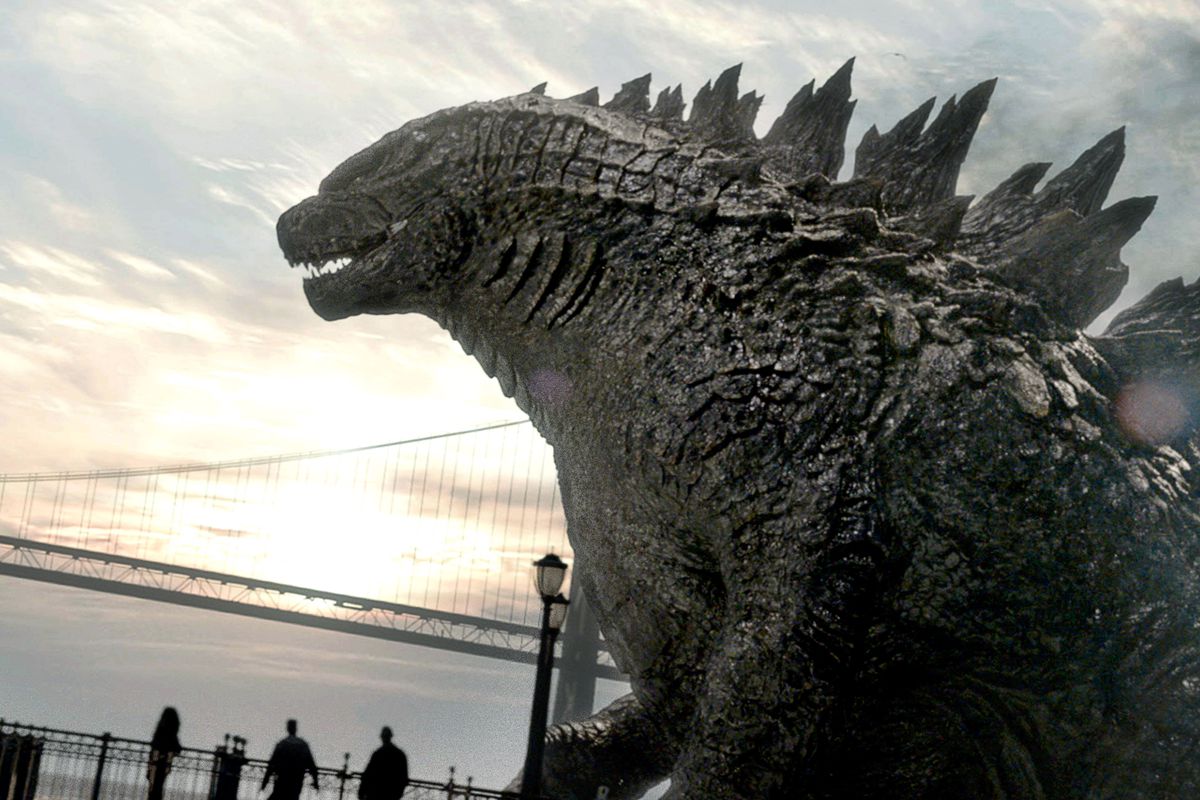
Tell me a little bit about how you approached those little details, like what's in his spine, or what kind of personality emerges in this iteration versus the 2014 film. King of the monstersGodzilla vs. Kongetc.
Godzilla has a very distinct personality in the Legendary Monster films; he is quite fierce and direct about things. But there is an intelligence in it. And one of the really interesting things about working with Toho is that they have so much insight into what's appropriate for Godzilla to be consistent as a character. And when you play as one of the characters that have gone through so many iterations over the years, they really understand what works and what doesn't. And sometimes you have ideas, and you ask their opinion about it, and they say: I'm not sure about that.
One of the best examples I have of this is, we did this one scene and we were trying to tell the story. And we didn't have the attention during the recording, and with the strike there's no chance to re-record or do things like that. So we're like, Okay, how can we tell this? And we wanted to do a point of view from Godzilla. (So we asked Toho): “Have you ever done that? Is that appropriate? Does he have Godzilla vision, does he see in a different spectrum of light? And they said, “We've thought about this several times. But we have come to the conclusion that Godzilla's position is unknowable.”
That's like, Oh yes, it's a god; you cannot show a god's point of view to the ants beneath him. That stuff was really interesting. And hearing feedback like that does change the way you approach the character in an interesting way. For the most part, we want it to stay true to what's already been captured on screen in this universe.
This version of the Monsterverse goes back to Godzilla (2014), which you also worked on. And Gareth Edwards had a very specific vision for this kind of – almost this incredible looking sparse CGI? It just looks really great and has such a specific voice, and this comes straight from that universe. And I'm curious how that affected the look of the show.
I was an artist when I worked on it Godzilla (2014). And so I was locked in a dark room for hours, doing things like working on the appearance of the heat ray, and the blue glowing spikes, and the destruction of the city and all that.
But a lot of Edwards' ideas were (along the lines of): The monsters are so big they can't fit in the frame, right? You want to tell things from a human perspective. And when you're standing in front of a 300-foot monster, you'll never be able to fully absorb it; you will see a foot, or you will see it from a distance, filtered through the silhouettes of buildings and other similar things. And so a lot of that philosophy, that subjective point of view, shaped how we created the show and how we approached our CGI shots. And sometimes you need those objective shots where you go wide and see what happens – but we really felt like we had to earn that by constantly putting the action on our people. And I think that fits with the philosophy of the show, because we're trying to tell this human drama, from this human point of view. And so when you're constantly going to 100-yard cameras where monsters are fighting for two or three minutes, it no longer feels like the same story you're trying to tell.
Monarch: Legacy of Monsters now airing on Apple TV Plus. New episodes will be released on Friday.
